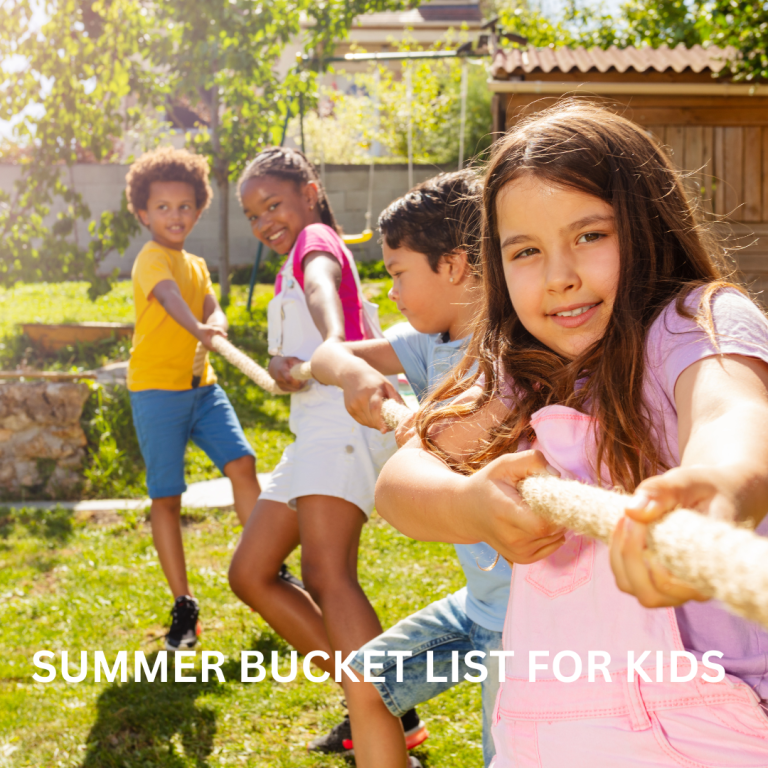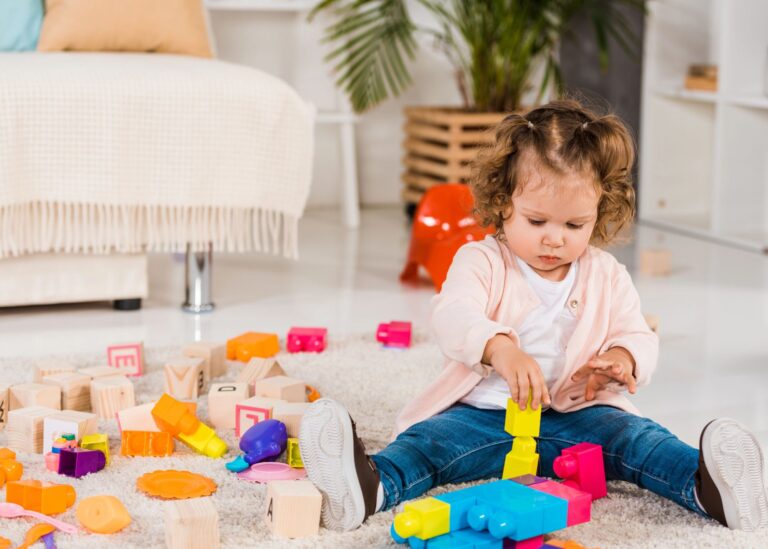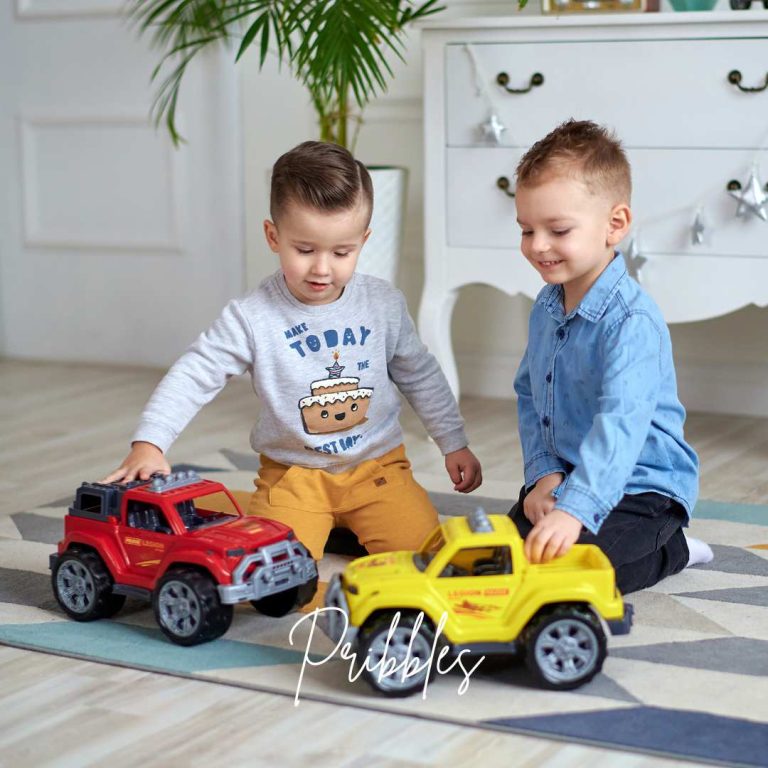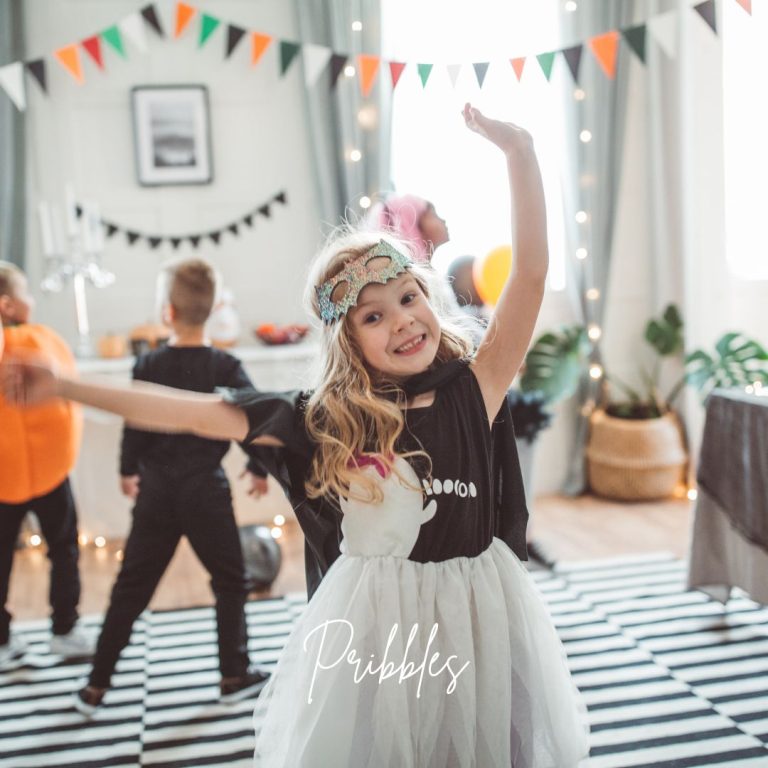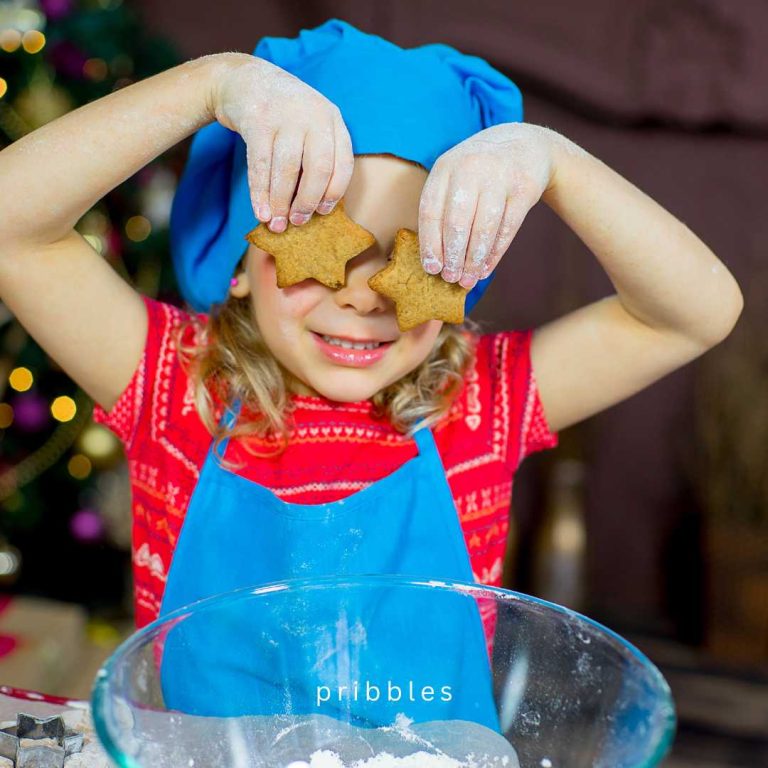Homeschool Room Ideas: From Cozy Corners to Full Classrooms
When I think back on my childhood, being homeschooled was such a big part of my story. We didn’t always have a fancy “homeschool room,” and honestly, some years our schoolwork happened right at the kitchen table.
Save for later reading – Pin below!
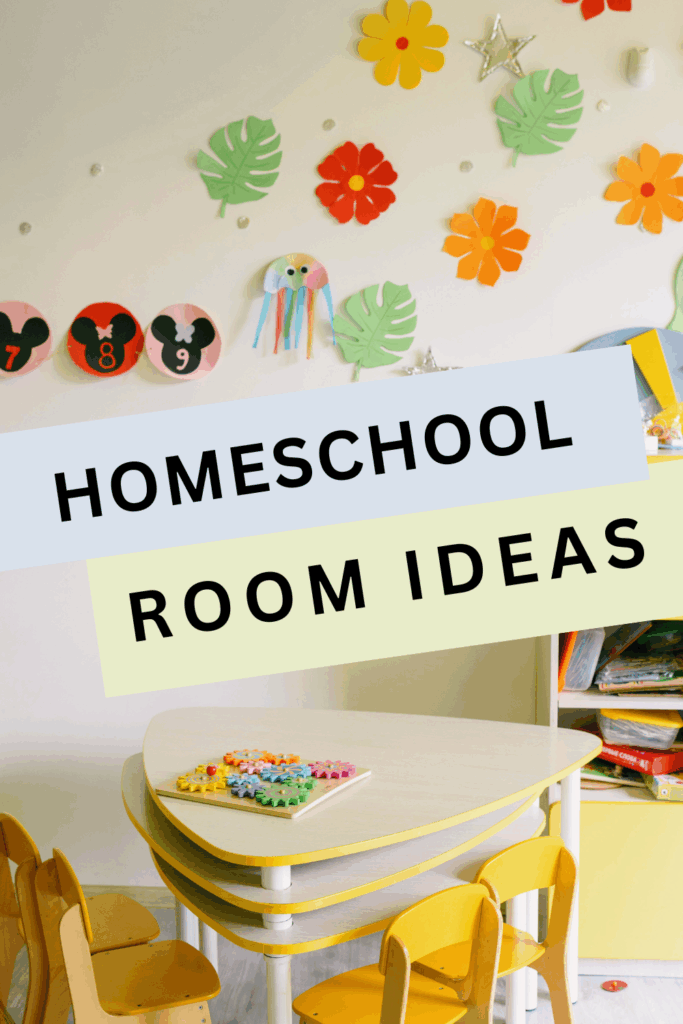
Affiliate links may be used in this post and if so I will receive a commission at no extra cost. I’m also part of the Amazon Affiliate (Associate) program where I earn a commission from sales made through my affiliate links. Read the full disclosure policy.
But I have the sweetest memories of one house in particular, where we turned the sunroom into our little learning space. The sunlight would stream in, our books were spread across the table, and it felt cozy and special in its own way.
That’s the beautiful thing about homeschooling—it doesn’t have to look one certain way. Some families have entire rooms dedicated to learning, while others make the most of a small corner or even a rolling cart in the living room. What matters most is creating a space that feels comfortable, inspiring, and works for your family’s rhythm.
In this post, I’m sharing homeschool room ideas that cover everything from furniture and organization to cozy reading nooks and budget-friendly hacks. Whether you have a whole room to work with or just a little space, you’ll find plenty of inspiration to make homeschooling feel organized, fun, and inviting.
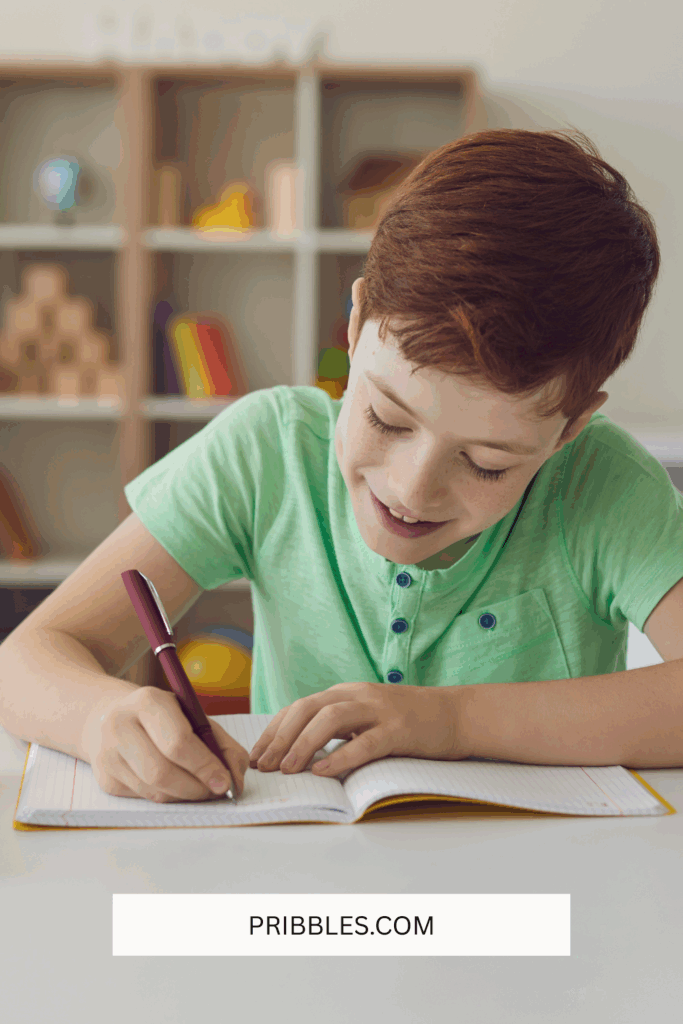
Choosing the Right Space
The first step in setting up a homeschool room is picking the spot where the magic will happen.
Don’t stress if you don’t have an extra bedroom just waiting to be transformed—homeschool spaces can work beautifully in almost any corner of your home.
Some families use a dining room that doubles as a classroom during the day, others carve out a nook in the living room, and a lucky few get to set up a whole dedicated space.
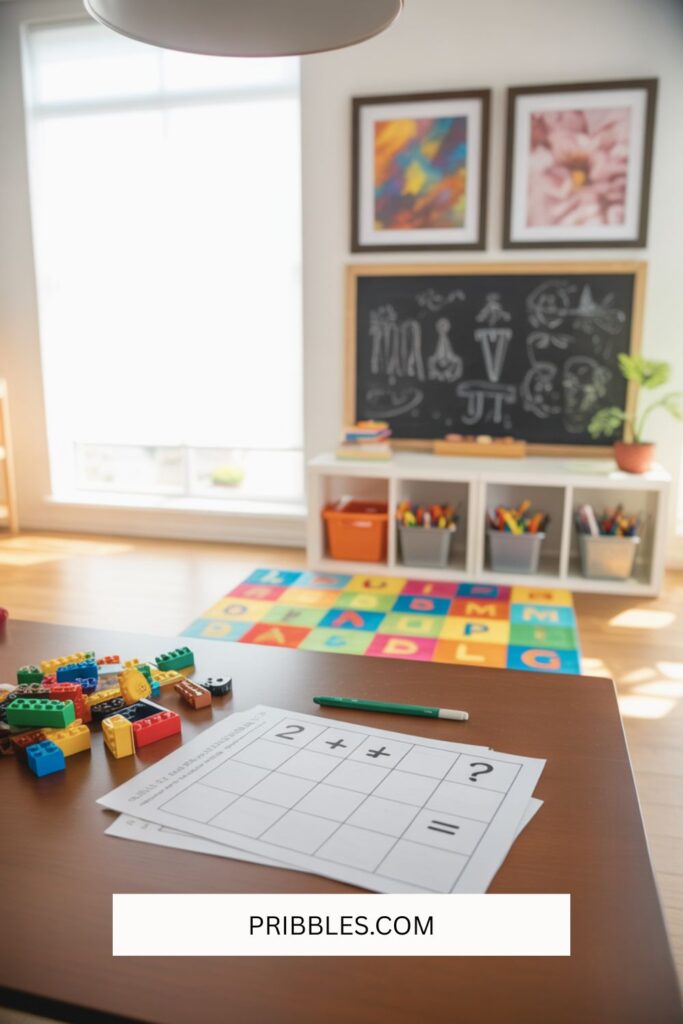
When you’re choosing your spot, think about a few things:
- Natural light: Sunshine does wonders for moods and focus, so if you can, pick a spot near a window.
- Noise level: You’ll want a space that’s not in the middle of constant traffic (hello, laundry room hallway).
- Room for supplies: Even if you’re minimal, books, pencils, and projects pile up—make sure there’s space to stash it all.
And if you’re short on space? Get creative. A rolling cart filled with supplies can turn any room into a homeschool zone in seconds.
You really don’t need a giant room—just a thoughtful corner that feels inviting and makes your kids excited to learn.
Essential Furniture
Once you’ve chosen your spot, it’s time to think about the basics—furniture. The good news? You don’t need to spend a fortune to create a functional homeschool setup. A solid table, some comfy chairs, and a little storage can go a long way.
Here are a few pieces to consider:
Desks & Tables – Some families love having individual desks for each child, while others prefer one large table everyone can gather around. Personally, I love the togetherness of a shared table—it makes discussions, projects, and even snack breaks so much easier. Adjustable or foldable tables can also be a game-changer if you’re working with a small space.
Chairs – Don’t underestimate the power of a comfy chair. Wiggly kids especially benefit from chairs that support good posture, but I’ll admit, I also love tossing a bean bag in the corner for cozy reading sessions.
Bookshelves – Vertical storage is your best friend here. Even a small bookshelf can hold a surprising amount of curriculum, storybooks, and baskets for supplies. Bonus points if you style it a little—you’ll be surprised how much a pretty shelf makes the space feel inviting.
Storage Units – Think cubbies, bins, or rolling carts. I personally love a rolling cart because you can move it around the house and tuck it away when school’s over.
The key is to create a setup that works with your home and your kids’ learning style. Remember—Pinterest-perfect classrooms are fun to look at, but the best homeschool furniture is whatever makes your days run smoother.
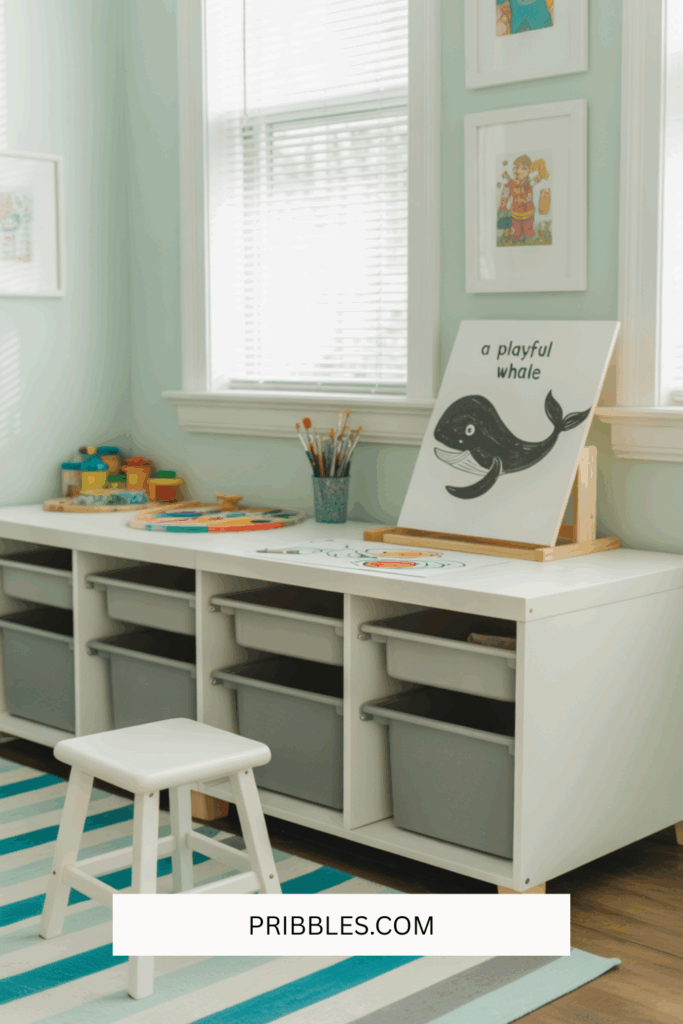
Organization & Storage Solutions
If there’s one thing every homeschool parent agrees on, it’s this: the books, papers, pencils, and projects add up fast. Staying organized doesn’t just keep your space tidy—it also keeps your sanity intact. The trick is finding storage solutions that are both practical and pretty enough that you actually want them in your home.
Some of my favorite ideas:
- Labeled Bins & Baskets – Assign a bin to each subject or each child. That way, when you need the math book or spelling notebook, you’re not tearing the house apart. Plus, baskets and bins can double as decor if you choose ones that fit your style.
- Rolling Carts – I can’t rave enough about these. A simple three-tier cart can hold pencils, workbooks, art supplies, and even a snack basket. When school’s over, just roll it into a closet or corner—out of sight, out of mind.
- Pegboards & Wall Storage – Vertical space is gold. Pegboards are perfect for hanging scissors, rulers, clipboards, or even little buckets of markers and crayons. They keep supplies handy without taking over your table.
- Wall-Mounted Shelves – Slimline shelves can hold everything from books to decorative jars of supplies. Bonus: they make the room feel more styled and less “school-ish.”
- Bulletin Boards or Command Centers – Perfect for posting weekly schedules, chore charts, or even a spot for kids’ artwork. It helps everyone know what’s coming up, and it keeps important papers from getting lost in the shuffle.
Organization doesn’t have to mean sterile or boring. Mix in textures you love—like wicker baskets, wooden crates, or colorful bins—to make the space feel warm and inviting. Trust me, when everything has a home, your homeschool days run so much smoother.
Decorating the Space
Now for the fun part—making your homeschool space feel good. Decorating isn’t just about making things look pretty (though that’s definitely a perk); it’s about creating an environment that inspires curiosity and makes learning enjoyable. When your kids love being in the space, school time feels a whole lot easier.
Here are some cozy-yet-functional ideas:
Color Palette – Bright and bold colors can energize the room, while softer neutrals or pastels create a calming vibe. Think about your kids’ personalities—some thrive in bold, cheerful spaces, while others focus better in a minimalist setup.
Educational Wall Decor – Maps, ABC charts, or a big world globe can double as both decor and learning tools. It’s functional and stylish.
Inspiration Boards – Add a corkboard or magnetic board where you can pin up art projects, nature finds, or motivational quotes. Kids love seeing their work displayed, and it makes the room feel uniquely theirs.
Personal Touches – Hang family photos, seasonal garlands, or cozy string lights. These little touches turn a “school room” into a warm, inviting space.
Art Display Corner – Dedicate a wall or wire with clips for your kids’ masterpieces. It’s like having your own rotating art gallery at home.
The best part? You don’t have to spend a fortune. Printable wall art, dollar store finds, and even DIY crafts can transform a plain corner into a space that feels inspiring and cozy.
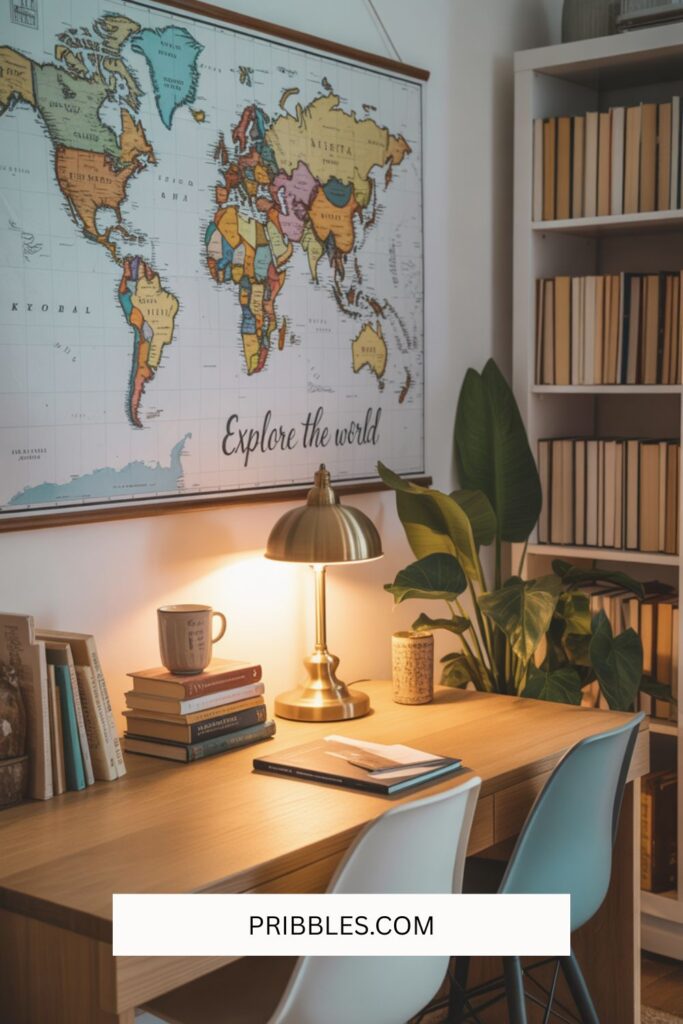
Creating Learning Zones
One of the easiest ways to make your homeschool space feel intentional is by breaking it into little “zones.” Think of it like mini stations that keep different activities organized and give kids a sense of variety throughout the day. Even if you only have one room—or just part of a room—you can still carve out little areas with a bit of creativity.
Here are some fun learning zones to try:
Reading Nook – A comfy chair, a small bookshelf, and maybe a basket of cozy blankets instantly turn any corner into a book lover’s paradise. Add a lamp or string lights, and you’ve got a space kids actually want to curl up in.
Science & Project Area – If your kids love hands-on learning, set up a surface that’s easy to wipe down (a plastic tablecloth works too!) for experiments, building kits, and messy projects.
Arts & Crafts Corner – Stock it with paper, markers, glue, and paints in easy-to-reach bins. Kids will love having a dedicated space to get creative without worrying about messing up the main table.
Tech Zone – A small desk or section of a table for laptops, tablets, or online lessons keeps cords and chargers contained. Trust me, designating this space helps keep tech time from taking over the whole room.
Quiet Study Spot – Sometimes kids just need a little space away from siblings. A small desk, partition, or even a lap desk in a quiet corner works wonders for independent work.
Having zones doesn’t mean you need a big, Pinterest-perfect setup. It’s really about giving activities a “home” so your kids know where to go for reading, creating, or focusing. It helps keep the space calm, organized, and way more fun.
Making It Comfortable
One of the biggest perks of homeschooling is that your “classroom” doesn’t have to feel like a classroom at all. Comfort is key. When kids feel at ease in their environment, they focus better, stay calmer, and actually enjoy the time spent there. A few cozy touches can make a world of difference.
Here are some comfort boosters:
Lighting Matters – Natural light is amazing, but don’t forget warm lamps or twinkle lights for cloudy days. Harsh overhead lighting can feel too “institutional,” so softer lighting creates a more inviting vibe.
Rugs for Warmth & Sound – A colorful rug not only ties the room together but also helps with noise control (a lifesaver if you have more than one kid learning at once). Plus, it’s an instant cozy factor.
Flexible Seating – Mix it up with bean bags, floor cushions, or a window seat. Not every lesson needs to happen at a desk—sometimes a comfy spot is perfect for reading or brainstorming.
Blankets & Throws – Keep a basket of blankets nearby for reading time or chilly mornings. It’s the kind of small touch that makes the space feel homey.
Add Greenery – A few plants (real or faux) can brighten the room and make it feel peaceful. Kids love having something “living” to care for, too.
Remember: comfort doesn’t mean clutter. A few intentional, cozy elements layered into your space can transform it from “school at home” to “a home that’s perfect for learning.”
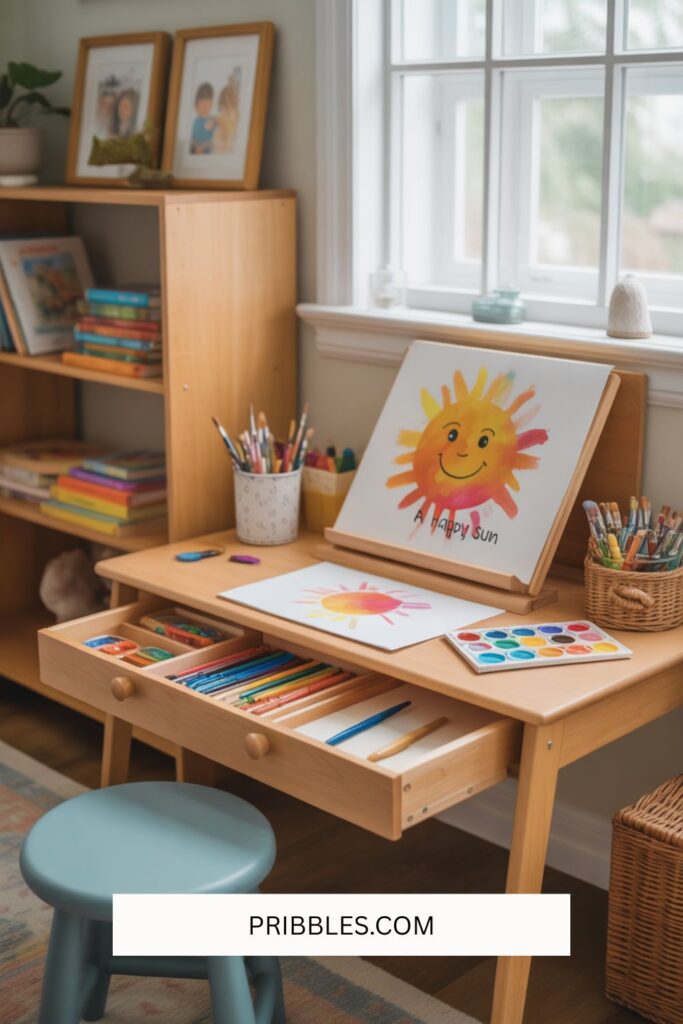
Budget-Friendly Homeschool Room Ideas
Here’s the truth: you don’t have to spend thousands of dollars (or even hundreds!) to create a functional, beautiful homeschool space. Some of the best setups I’ve seen were pieced together with secondhand finds, DIY projects, and a little creativity. The goal isn’t to make it look like a magazine spread—it’s to make it work for your family and feel good to be in.
A few budget-friendly tricks I love:
DIY Storage – Mason jars, dollar store bins, and even repurposed shoe boxes can organize supplies for next to nothing. Add a little label or washi tape and suddenly it looks Pinterest-worthy.
Thrift & Secondhand Finds – Facebook Marketplace, garage sales, and thrift shops are goldmines for desks, chairs, and bookshelves. A quick coat of paint or new hardware can make an old piece feel brand new.
Repurpose What You Have – That extra dresser in the guest room? Perfect for storing workbooks and art supplies. A folding table from the garage? Instant homeschool desk.
Printables for Decor – You don’t need to buy expensive wall art or posters. There are tons of free or low-cost educational printables online—maps, alphabet charts, inspirational quotes—that you can frame or tape right to the wall.
Nature as Decor – Pinecones, rocks, shells, pressed flowers—these not only look pretty but also spark curiosity. Bonus: they’re completely free.
At the end of the day, the most memorable homeschool spaces aren’t the ones with the fanciest furniture or coordinated bins—they’re the ones where learning, laughter, and connection happen.
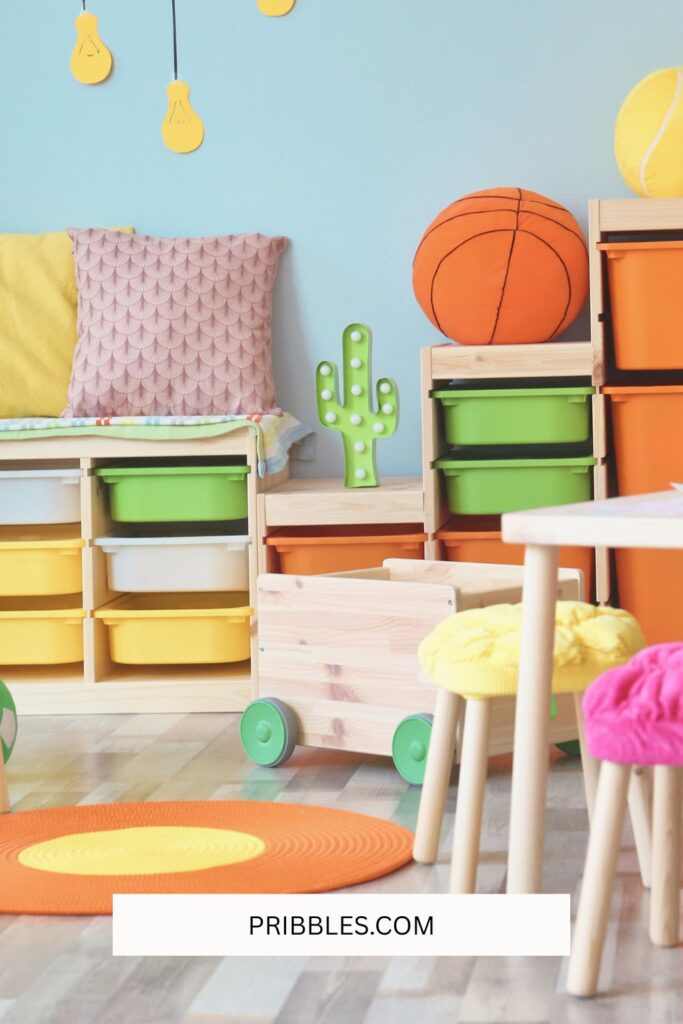
Real-Life Examples & Layouts
Sometimes the best inspiration comes from seeing how other families make it work. Every home is different, and every homeschool family has its own rhythm, so there’s no one-size-fits-all layout.
Here are a few real-life styles that can spark ideas for your own setup:
Small-Space Setups – If you’re in an apartment or cozy home, a rolling cart, a fold-out table, and a bookshelf can be all you need. These flexible setups prove you don’t need a whole room to homeschool well.
Minimalist Homeschool Rooms – For families who like a clean look, a simple desk, a couple of shelves, and natural light keep things clutter-free and calming. This is especially great for kids who get distracted easily.
Cozy Homeschool Nooks – Some families carve out a corner of the living room or even a sunny window seat. Add a rug, a basket of books, and a lamp, and suddenly you’ve got a designated learning spot that feels inviting.
Full-Room Classrooms – If you do have the extra space, a dedicated room with zones for reading, projects, and tech can feel like a true classroom. These often work best for larger families or parents juggling multiple grade levels.
Nature-Inspired Setups – I’ve seen families bring the outdoors in with plants, natural wood furniture, and baskets filled with nature finds. It’s calming, grounding, and reminds kids that learning doesn’t just happen inside four walls.
The beauty of homeschooling is that your layout doesn’t have to mimic anyone else’s—it just needs to fit your lifestyle. Borrow what inspires you, tweak it to work in your space, and create something that feels like home for your family.
Closing Thoughts
At the end of the day, a homeschool room isn’t about having matching bins, a Pinterest-perfect setup, or even a whole room to yourself. It’s about creating a space where your kids feel inspired to learn and where your family feels at ease. Some of my fondest memories of being homeschooled aren’t about the “stuff” at all—it’s about the way the sunroom in our home felt like a little haven, filled with books, laughter, and everyday learning moments.
Your homeschool space can be as simple or as elaborate as you want it to be. Start small, use what you have, and let it grow and change with your family’s needs. Whether you’re schooling at the kitchen table, in a cozy corner, or a fully decked-out room, the heart of homeschooling is connection, curiosity, and the joy of learning together. That’s the part your kids will remember most.
Save for later




